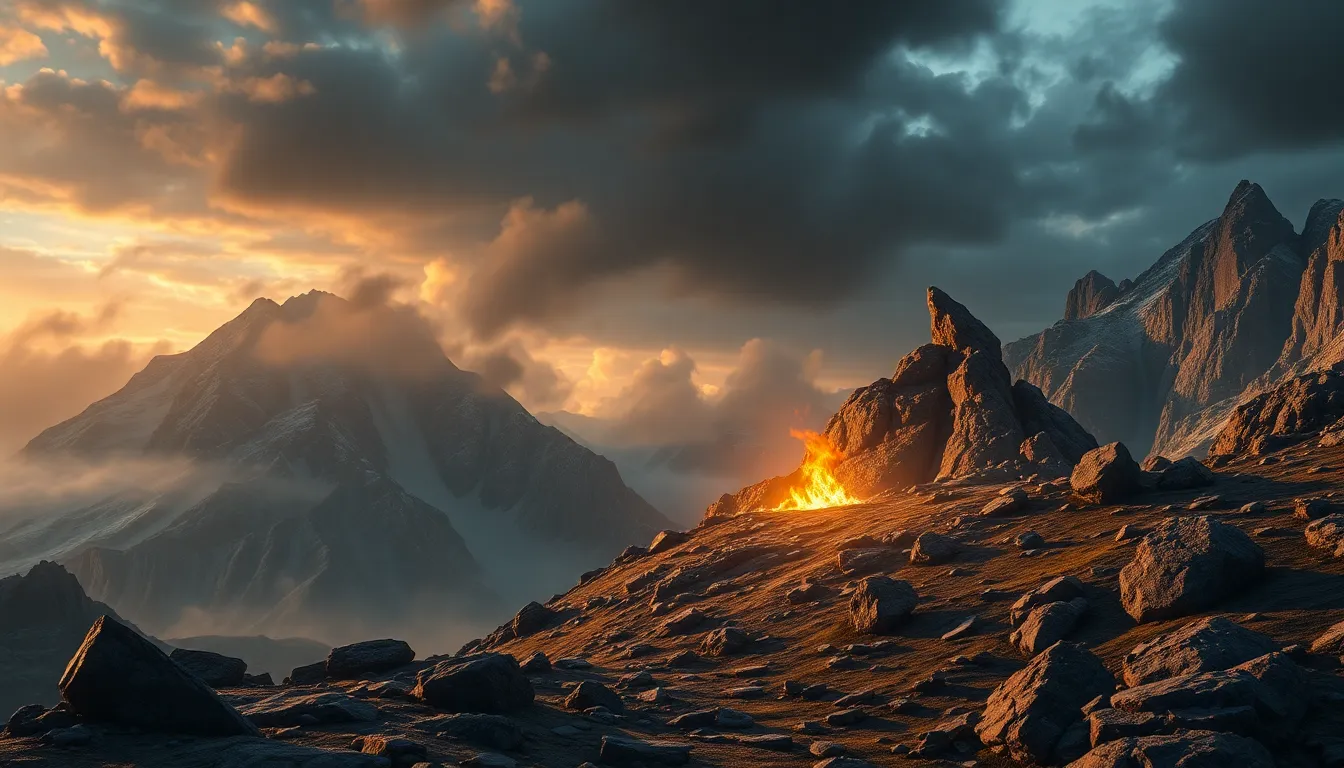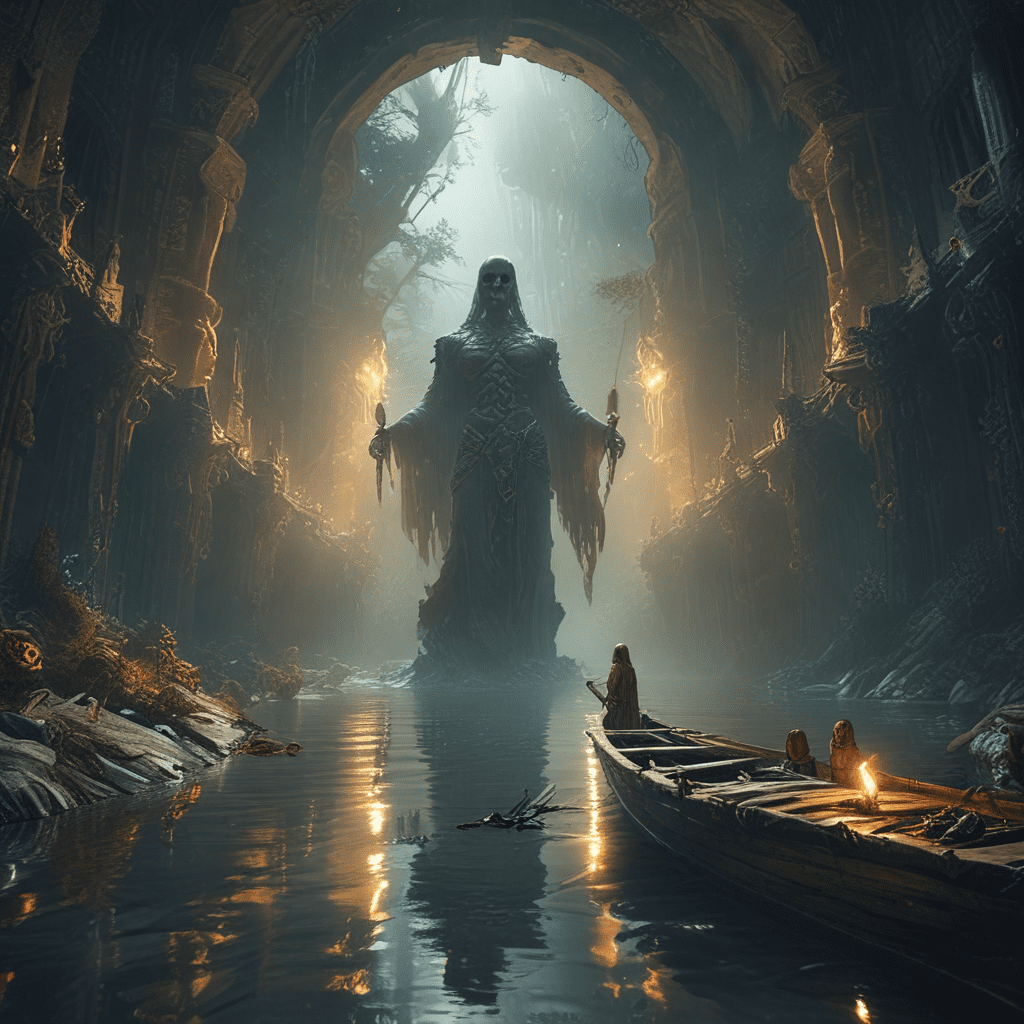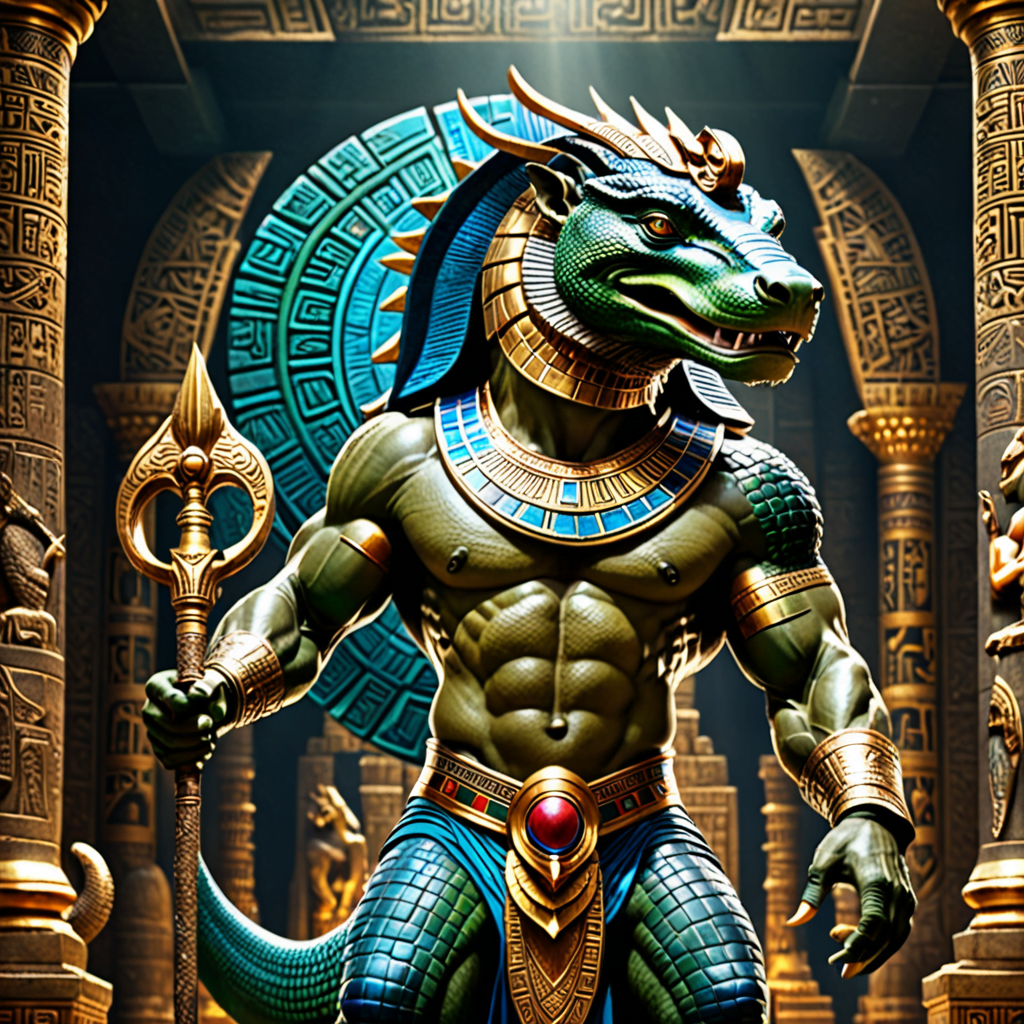The Mo’o: Guardians of the Islands
In the rich tapestry of Hawaiian folklore, the mo'o stands as a captivating figure, a supernatural being steeped in mystery and power. These shape-shifting spirits are revered as guardians of the islands, intricately woven into the fabric of Hawaiian culture and tradition. The mo'o embody the interconnectedness of land, water, and ancestral spirits, serving as both protectors and teachers, reminding Hawaiians of the importance of respect for nature and the sacredness of their heritage.
Stories of mo'o have been passed down through generations, shaping the worldview of the Hawaiian people. These tales paint a picture of a world where the supernatural and the natural exist in delicate balance. The mo'o are not simply mythical creatures; they are embodiments of powerful forces that influence the environment, the lives of humans, and the very essence of the islands.
A Shapeshifting Spirit: Forms of the Mo’o
The mo'o is not confined to one specific form, but rather is known to take on a variety of shapes, reflecting its adaptability and the diverse nature of the Hawaiian landscape. Most commonly, the mo'o is depicted as a lizard, often adorned with vibrant colors and intricate patterns. These lizard forms are symbolic of the mo'o's connection to the land, representing the watchful eyes that protect the islands.
However, the mo'o's shapeshifting abilities extend beyond reptilian forms. It can transform into other animals, such as a shark, a bird, or even a human. This transformative nature is a reflection of the mo'o's versatility and its ability to move seamlessly between different realms, bridging the gap between the physical and the spiritual. The mo'o's ability to take on multiple forms underscores its importance as a bridge between the natural world and the world of the ancestors.
Mo’o in Hawaiian Mythology: The Importance of Land and Water
In Hawaiian mythology, the mo'o is closely associated with the elements of land and water, symbolizing the inextricable link between these vital forces. The mo'o's connection to the land is evident in its guardianship of sacred sites and its role as a protector of natural resources. The mo'o is often depicted as residing in caves, waterfalls, or other significant locations, guarding the land against those who would disrespect its sanctity.
The mo'o's connection to water is equally profound, with many legends associating this spirit with bodies of water, particularly streams, rivers, and lakes. It is believed that the mo'o can control the flow of water, influencing rain, floods, and droughts. The mo'o's influence on the water cycle underscores the importance of water in Hawaiian culture, reminding people that the natural world is a delicate balance.
The Mo’o and the ‘Aumakua: Ancestral Spirits and Familial Connections
The mo'o also plays a significant role in the concept of the 'aumakua, ancestral spirits who act as guardians and protectors of their descendants. Many Hawaiians believe that their 'aumakua can take the form of a mo'o, serving as a link to their family lineage and providing guidance and support. The mo'o 'aumakua can act as a source of strength, wisdom, and protection, reminding individuals of their connection to their ancestors and the importance of honoring their heritage.
These familial connections are further reinforced by the belief that certain families are associated with specific types of mo'o. For instance, a family might be linked to a particular species of lizard or a specific location where a mo'o is known to reside. These connections strengthen the bond between the family and the mo'o, emphasizing the importance of maintaining respect and reverence for the ancestral spirits.
Mo’o in Hawaiian Folklore: Tales of Transformation and Warning
In Hawaiian folklore, the mo'o is a recurring figure, its presence weaving itself into numerous tales of transformation, warning, and mystery. These stories often serve as cautionary tales, reminding people of the consequences of disrespecting nature and the power of the mo'o.
One common theme in these stories is the mo'o's ability to shapeshift, often transforming into humans to test the character of those they encounter. Those who act with respect and kindness are often rewarded, while those who are arrogant or greedy may face dire consequences. These tales serve as a reminder that the mo'o is not to be trifled with, and that acknowledging its power and respecting its domain is crucial for maintaining harmony with the natural world.
The Mo’o and the Power of Place: Sacred Sites and Legendary Encounters
The mo'o is deeply connected to specific locations in the Hawaiian landscape, often residing in places considered sacred or imbued with spiritual significance. These sites are seen as portals between the physical and spiritual realms, offering glimpses into the unseen world of the mo'o.
One prominent example is the Waimea Valley, on the island of Oahu. This lush valley, home to a cascading waterfall and ancient Hawaiian temples, is said to be a favored dwelling place for the mo'o. Legend speaks of a mo'o residing in the depths of the waterfall, its presence felt in the mist and the rustling of leaves.
Another significant site is the Kilauea Volcano, on the Big Island. Kilauea's volcanic activity, its fiery eruptions, and its association with Pele, the goddess of fire, have long been linked to the mo'o. Some believe that the mo'o are protectors of the volcano, guarding its power and ensuring its balance.
These specific locations serve as reminders that the mo'o are not just creatures of myth and legend, but are beings deeply connected to the land. By honoring these sacred sites, Hawaiians show respect for the mo'o and acknowledge their presence in the world.
The Mo’o as a Symbol of Nature: Respect for the Environment
The mo'o is more than just a supernatural being; it serves as a powerful symbol of nature's power and the importance of respecting the environment. The mo'o's connection to the land, water, and the natural cycles serve as a constant reminder of the delicate balance that must be maintained between humans and the natural world.
Through tales and traditions, the mo'o teaches Hawaiians about the interconnectedness of all things, emphasizing the importance of sustainability and conservation. The mo'o's transformative abilities also symbolize the dynamic nature of the environment, constantly changing and evolving.
The ancient Hawaiians held a deep reverence for the natural world, believing that all living things were connected and that each played a vital role in the ecosystem. The mo'o, as a guardian of the islands, reinforced these values, encouraging responsible stewardship of the land and its resources.
Theories of the Mo’o: Origins and Interpretations
The origins of the mo'o remain shrouded in mystery, prompting various theories and interpretations. Some scholars believe that the mo'o is a manifestation of indigenous beliefs about guardian spirits, representing the protective forces of nature that were revered across ancient cultures.
Others suggest that the mo'o is a reflection of the close relationship between the Hawaiians and the natural world, particularly the creatures that inhabited their islands. The lizard, a ubiquitous presence in the Hawaiian environment, may have served as inspiration for the mo'o's reptilian form.
Regardless of its origins, the mo'o's enduring presence in Hawaiian culture speaks to its deep symbolism and the profound impact it has had on the worldview of the Hawaiian people.
The Mo’o in Modern Hawaiian Culture: Relevance and Preservation
While the mo'o is deeply rooted in ancient Hawaiian traditions, it remains relevant in modern Hawaiian culture. The mo'o serves as a reminder of the importance of preserving the islands' rich heritage, honoring their ancestors, and respecting the environment.
In contemporary Hawaiian society, the mo'o continues to inspire artists, writers, and musicians, its image and symbolism being incorporated into various forms of creative expression. The mo'o also plays a role in environmental activism, serving as a symbol of the need to protect the islands' natural resources and maintain the delicate balance of nature.
The mo'o's enduring presence in Hawaiian culture speaks to its power as a symbol of cultural identity, environmental stewardship, and the enduring connection between humans and the natural world.
Unraveling the Mystery: Continuing Research and Understanding
Despite the wealth of knowledge surrounding the mo'o, there is still much to be learned about this enigmatic creature. Researchers and scholars continue to explore the origins, symbolism, and cultural significance of the mo'o, seeking to further understand its role in Hawaiian history and its relevance to contemporary Hawaiian society.
Through ongoing research, analysis of ancient stories, and interviews with Native Hawaiian elders, researchers are gaining deeper insights into the complex relationship between the mo'o and the Hawaiian people. This research is crucial for preserving the cultural heritage of the islands and ensuring the continued relevance of the mo'o for future generations.
FAQ
What is a mo'o?
A mo'o is a shape-shifting spirit in Hawaiian folklore. It is often depicted as a lizard but can take on other forms, including animals and humans.
Why are mo'o important in Hawaiian culture?
Mo'o are revered as guardians of the islands, symbols of nature's power, and protectors of sacred sites. They represent the interconnectedness of humans, the land, and ancestral spirits.
What are some examples of mo'o in Hawaiian legends?
There are many stories about mo'o in Hawaiian folklore, including tales of transformation, warning, and encounters with these spirits. Some tales describe mo'o protecting sacred sites, while others tell of their interactions with humans.
Are mo'o still relevant in modern Hawaiian culture?
Yes, the mo'o remains a symbol of Hawaiian identity, environmental stewardship, and the connection to nature. They continue to inspire artists, writers, and activists.
How can I learn more about mo'o?
You can learn more by researching Hawaiian mythology, reading traditional stories, and seeking information from Native Hawaiian cultural resources.




